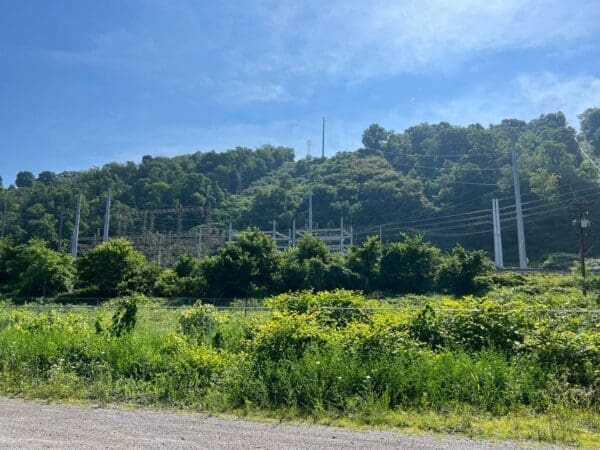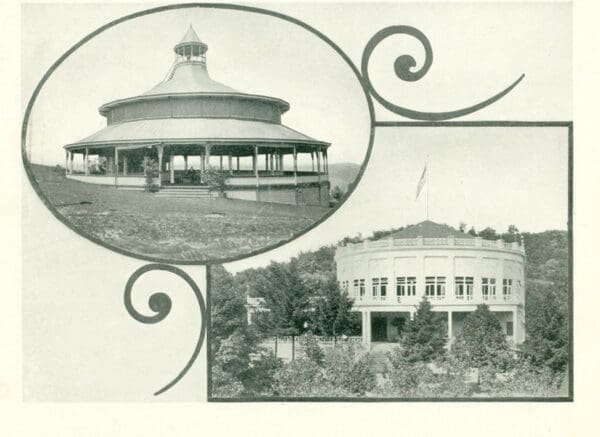Ever wonder why Wheeling is home to a community named after the classical composer Mozart? Or why, while driving through the community of Mozart, you’ll find street names such as Park Road, Incline Avenue, Lower Incline Avenue, and even the Incline Bar?
That’s because in South Wheeling there was once an incline that rose above the hills of South Wheeling to an awe-inspiring park with endless attractions and striking views.
Henry Schmulbach was one of Wheeling’s most successful beer barons and one of the wealthiest men in the state of West Virginia, but one of his proudest accomplishments was the creation of Mozart Park above the hills in South Wheeling. This article is part 1 of 2 that will go over the history of the property, the construction of the park, and the incline railway that would hoist visitors to one of the most premier parks in the tri-state area.
The idea for Mozart Park started with Schmulbach’s vision of a park for the people of South Wheeling. The park would open in 1892, but as early as 1880, Schmulbach offered an area of Wheeling Island for a park, which he owned and operated as a racetrack. The only park in Ohio County was Hornbrook Park, which was eventually purchased by Wheeling brewery entrepreneur Anton Reymann, and would be later known as Wheeling Park.

A Proper Park
It was argued, though, that the people of South Wheeling did not have a proper park in their own neighborhood, and this is where Schmulbach stepped in to fulfill their dreams.
The original site for Mozart Park was called the Frazier Farm and was purchased in 1892 for $13,000. The farm was high atop a hill that overlooked South Wheeling, and at one time had been a large peach orchard. Additional lots were purchased in 1893 which brought the total land purchases to $17,300.
The parks site was also conveniently located near the Schmulbach Brewing Company which was located on 33rd street, and the park would serve as an exclusive outlet for Schmulbach beer. During the early stages of the park there was a lot of construction activity. Workers were busy constructing the main building that was to contain a bar, billiard room, bowling alley, reception rooms, a large hall, and toilet rooms.
The first official gathering at Mozart Park occurred in July of 1892 and was an exclusive event for members of the Mozart singing society, and the group had picnics in the orchards. The park opened to the public in the following year in July of 1893, and its official grand opening occurred on October 25, 1893.
Although the park was in an ideal location away from the overcrowding and smells of the city, transportation to the park proved to be very difficult. If you wanted to visit the park you either had to walk or take a wagon up to the park. That is why in the spring of 1893 construction began on an incline railway; similar to what was already being used in Pittsburgh and Cincinnati. The base of the incline was located near present-day 43rd Street.

With all of the construction occurring at the park, it proved to be a very dangerous place. In June of 1893, a stone weighing 1,400 pounds was being elevated onto a sled for use on the incline when it broke loose and crashed down the hillside. It came within two feet of Jacob Brown’s house.
A woman with a baby in her arms was standing near the gate of her home and barely had enough time to move before the stone crashed through the fence and into a coal house. The boulder did not stop until in crashed through another fence.
Later in June of 1893, stone taken from the quarry near Mozart Park was ruled unfit for use and stone from a different quarry was secured. In July of 1893, a horse pulling a wagon loaded with brick lost footing near the top of the incline. The horse went over and down the hillside and hit a fence enclosing the park.
The wagon was smashed and the horse was injured considerably. On another occasion, a driver was struck by lightning and rendered unconscious for half an hour, but eventually recovered. The horse was not injured.

A Grand Opening
Also, in July of 1893, a gang of workmen uncovered a large stone and found a copperhead snake that “sprang at them.” The snake was killed and reported as being very thick and nearly 3 feet long. On another occasion workers killed a black snake; its length was 6 feet 4 inches.
October 24, 1893, was the grand opening of the incline railway. Henry Bue (who also designed the Mingo Indian statue atop Wheeling Hill) was the park’s manager and he said the incline cost a total of $32,000.
At 4:15 p.m., members of the board of directors for Mozart Park invited guests, and the press were ready to be hoisted 940 feet to the top of the hill with steam and coal power. Each car could seat 28 people comfortably, but on its maiden voyage, 33 were crowded into the car.
Once atop the hill, guests toured the grounds of the park, which at that time contained a building with four bowling alleys, a bar room, a dancing pavilion with an elevated section for the orchestra, and a capacity of 5,000 people (the largest in the state), and gardens with plenty of seating to enjoy the scenic views. One visitor from Germany said, “no scenery along the Rhine could compare with it.”

On the second day of operation for the incline, plans did not go so well. A cross head on one of the engines broke, and repairs were not made until late in the day which forced many visitors to either leave or make the trek uphill. By November of 1893, the incline was running smoothly. Cars were run every 2 minutes and could handle 1,200 people every hour. The cost to go up and down the incline was 10 cents.
The incline would remain open until 1907 until the Mozart Street Car Line took its place. By that time street cars were powerful enough to climb Caldwell’s Run Road to the park.
Part 2 of this story will discuss some events that took place at the park and how this one-time getaway for Wheeling residents turned into the community of Mozart.



Thank you, this is very interesting. I enjoyed the read.
THanks for the history. I’ve learned more about Wheeling since I moved away than I did living there.
Thanks for the history, I lived at 36th & Chapline Sts, and always heard the story of the incline….